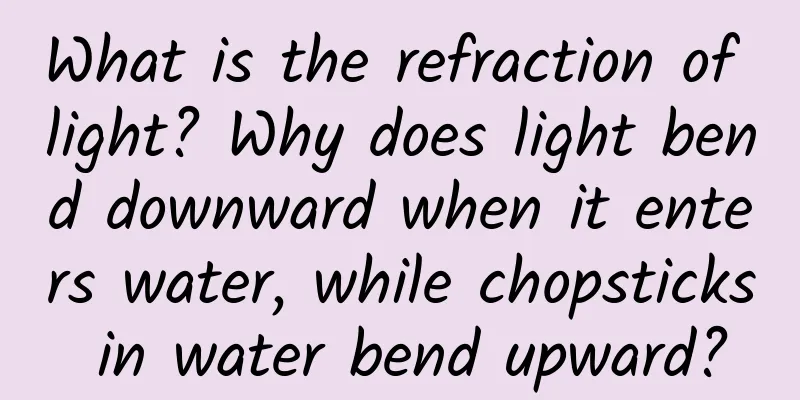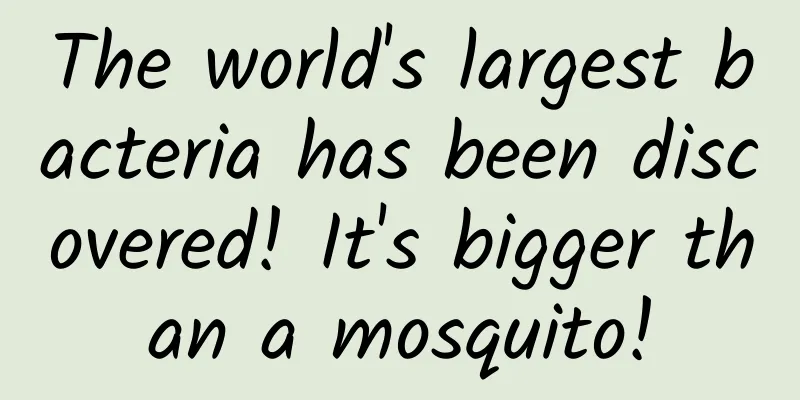What is the refraction of light? Why does light bend downward when it enters water, while chopsticks in water bend upward?

|
Many people have this question. The explanation in the physics book is that when light enters water, it is deflected in the normal direction, but the chopsticks in the water seen by the human eye are deflected upward. Does this conform to the principle of light refraction? To understand this problem, we must first understand what the refraction of light is. The so-called refraction of light refers to the phenomenon that when light is obliquely incident from one medium to another, the propagation direction will change, causing the light to be deflected at the junction of different media. This phenomenon is the refraction of light. When light acts on any object, refraction and reflection will occur. Due to different densities and images of various objects, the refraction and reflection of light produce different angles and changes. It is because of this principle that human eyes can see various objects. In addition, visible light is a composite light, composed of seven colors, including red, orange, yellow, green, cyan, blue, and purple. Different colors have different wavelengths. From red to purple, the wavelength range is between about 780nm and 380nm. Red has the longest wavelength and purple has the shortest wavelength. When various objects absorb light of different wavelengths, the absorption rate and reflectivity are different, so humans see different colors of various objects. This principle is not within the scope of this article, so I won't talk about it today. The refractive index of light is related to the speed of light in the propagation medium. The speed of light in different media is different. It is fastest in vacuum, with an exact value of 299,792,458 meters per second, followed by air, which is about 299,552,816 meters per second. Since both speeds are close to 300,000 kilometers per second, people generally refer to the speed of light in vacuum and the speed of light in air as 300,000 kilometers per second. The speed of light in ice is 230,000 km/s, in water is 225,000 km/s, in alcohol is 220,000 km/s, and in glass is 200,000 km/s. The refractive index of light in different media is different, following the law of inverse proportion to the speed of light, that is, the greater the speed of light in the medium, the smaller the refractive index, and the smaller the speed of light in the medium, the greater the refractive index. The formula for calculating the refractive index is: n=c/v. Here n is the refractive index, c is the speed of light in a vacuum, and v is the speed of light in the medium. For example, according to this formula, the refractive index of light in water is n=30/22.5≈1.33 The refractive index of light is measured based on the "normal line". What is a "normal line"? It is an imaginary line segment perpendicular to the plane of a medium when light enters a medium from a vacuum or air (pictured above). When light enters water and when we see chopsticks in water, the medium is water, so why does the refractive index look different? It turns out that the direction of light entering the water is opposite to the direction of light propagation of the chopsticks in the water we see. When light enters water, it goes from air into water, where its speed slows down, and it refracts toward the normal (the axis perpendicular to the water surface). The angle with the normal becomes smaller, so it appears to be "deflected downward." The chopsticks we see in the water are the reflected light from the chopsticks that is transmitted from the water to our eyes. It is propagating from a relatively slower medium to a faster medium, and therefore goes in the opposite direction of the light entering the water. In this way, the refraction will move away from the normal and the angle will become larger. In this way, the chopsticks we see will be "deflected upwards". Do you understand now? It turns out that we got the direction wrong. The propagation direction of the light when it enters the water and when we see the chopsticks in the water are exactly opposite, so the deflection direction is also exactly opposite. Welcome to discuss, thanks for reading. The copyright of Space-Time Communication is original. Infringement and plagiarism are unethical behavior. Please understand and cooperate. |
<<: Fish's memory not only exceeds 7 seconds, some fish may also have prehistoric memory
>>: How did people in the Ming and Qing dynasties do charity? ——Study Room No. 1
Recommend
The success of Honda P7 does not depend on Guangzhou and Wuhan, but on the headquarters in Tokyo, Japan.
On March 3, 2025, GAC Honda held its Technology E...
2007-2015: Two tables to show the competition history between iPhone and Android
Mary Meeker has released the 2016 Internet Trends...
In October 2023, China exported 736,000 cars to Russia, a year-on-year increase of 489%.
Recently, according to foreign media reports, Rus...
One simple action can tell if your knee pain is caused by a problem! Come and see if you have been affected
As the saying goes, the legs are the first to age...
Goo Hara's mother will donate part of her inheritance and explain the reason for leaving home. Netizens question whether this is true?
On the JTBC current affairs program "Lee Kyu...
Google confirms next version of Android will no longer use Oracle's proprietary Java API
Google is planning to switch Java application pro...
Should wisdom teeth be removed? If it doesn't hurt, you can just leave it alone? Here are all the answers about wisdom teeth
Most people don’t know they have wisdom teeth. So...
New US President's policy: Apple and Intel will have a hard time in China
According to CNNMoney, a financial website under ...
RNA bases were discovered on an asteroid. Could it be that humans are really aliens?
There has always been controversy over the origin...
How to use scientific “user segmentation” to break through the bottleneck of user growth?
When talking about the user growth of Internet pr...
Surgery without anesthesia, life without anxiety, rare gene mutations inspire new medicine
The easiest pain to bear is someone else's. —...
How to plan topics in content operations
On August 27, 2014, an event known as the first f...
GDC 2015: The secrets of Chinese mobile game social operations
Recently, KTplay, as China's largest mobile g...
I have been deceived by black sesame pills for too long! What is the real secret to growing long hair?
Recently, #Eating too many black sesame pills may...









